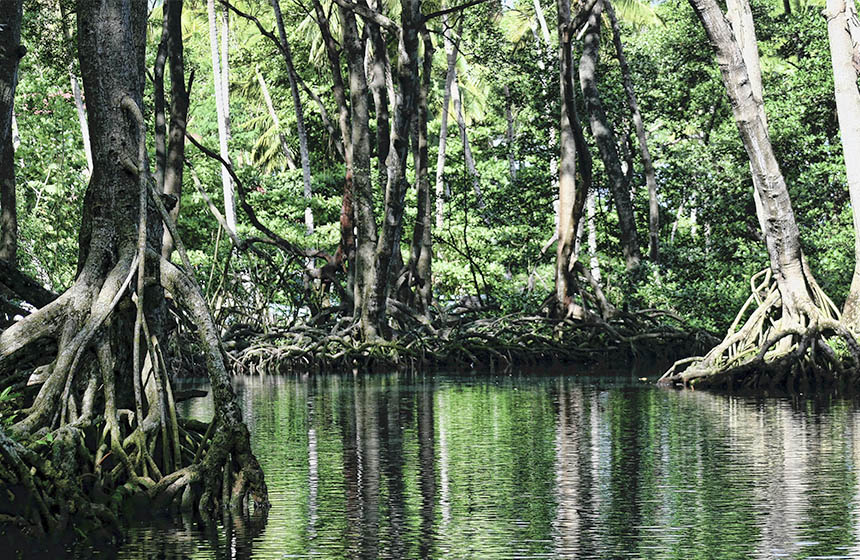Local committee promotes food security and adaptation through agrobiodiversity, coastal afforestation, and a pearl farm
Namdrik Atoll is a coral atoll in the Pacific Ocean that already suffers from climate change-induced impacts similar to those faced by other low-lying island states. The Local Resource Committee is therefore working to reduce dependence on declining fisheries and implement various agricultural and revegetation methods to improve food security, coastal resilience, and the well-being of marine species.
Nature-based Intervention:
The Namdrik Atoll Local Resources Committee, in an effort to improve community self-sufficiency, food security, and adaptive capacity, is increasing the use of traditional crops such as breadfruit, taro, and native pandanus. These efforts have reduced the recent increased dependence on imports for food. Furthermore, a pearl farm has been created to provide jobs for local community members. These combined efforts also serve to reduce community dependence on declining fisheries. Sustainable fisheries policies, seasonal no take zones, and shoreline vegetation restoration have been implemented in order to further improve the resilience of the coastal community and protect marine ecosystems. Improved rainwater harvesting techniques and the increased use of solar technology have also been adopted.
Overview of context and outcomes:
The Namdrik Atoll Local Resources Committee was established to implement a Resource Management Plan created in consultation with local community members. This Plan included a focus on managing the likely impacts of climate change facing this part of the low-lying island state of the Marshall Islands. The main issues identified included waste water management, declining fisheries, erosion, flooding, invasive species, threats to mangroves, and seasonal shifts.
Case effectiveness on
Climate change
The restoration of shoreline vegetation is reported to have increased local adaptive capacity to coastal climate risks. Food security has also reportedly improved, allowing the community to become less dependent on food imports. This improved food security has been recognised as of potential critical importance in the case of a storm event that risks cutting the island off from imported food supplies.
Ecosystem health
Ecological effect: PositiveThe restored mangrove sites have been found to act as nurseries for various marine species.
Socioeconomic outcomes
The replanting of pandanus trees have reportedly facilitated the development of handicrafts which now comprise a significant revenue stream for the local community. The established pearl farm also reportedly provides an additional revenue stream for the local community.
Governance
This project is governed under a Resource Management Plan which was established by the Namdrik Atoll Local Resources Committee.
Finance
This project generates income from within the local community and has received outside support from the UNDP.
Monitoring and evaluation
There are no clearly reported monitoring protocols currently identified.
Trade-offs and limitations
No information yet available on tradeoffs.

Intervention type
- Food production
- Protection
- Restoration
Conducted at landscape scale
Ecosystem type
- Coastal
- Mangroves
- Terrestrial production
Climate change impacts addressed
- Coastal erosion
- Coastal inundation
- Storm surge
Instigators
- Local NGO or CBO (eg. indigenous)
- National government/agency
Societal challenges
- Biodiversity conservation
- Climate change adaptation
- Disaster risk reduction
- Economic and Social development
- Food security
Outcomes
- Food security: Positive
- Water security: Not reported
- Health: Not reported
- Local economics: Positive
- Livelihoods/goods/basic needs: Not reported
- Energy security: Not reported
- Disaster risk reduction: Positive
- Rights/empowerment/equality: Not reported
- Conflict and security: Positive
- No. developmental outcomes reported: 5
Resources
Read resource 1Literature info
- Grey literature



